
Staraya Ladoga is a village in Leningrad Region, located on the shores of the Volkhov River, 120 kilometers from St. Petersburg. Today, less than 2,000 people live in it; in medieval times, however, it was a large multinational city that traded with Central Asia and Northern Europe. Archaeological excavations point to the fact that Ladoga was founded no later than the year 753. Meaning that, in 2023, it’s celebrating its at least 1,270th birthday.
Ladoga is attributed the status of the first capital of Russia. All because, according to some chronicles, this is where Rurik, the founder of the first dynasty of Russian rulers, began to rule – the man whom Slavic tribes summoned to rule from northern lands.
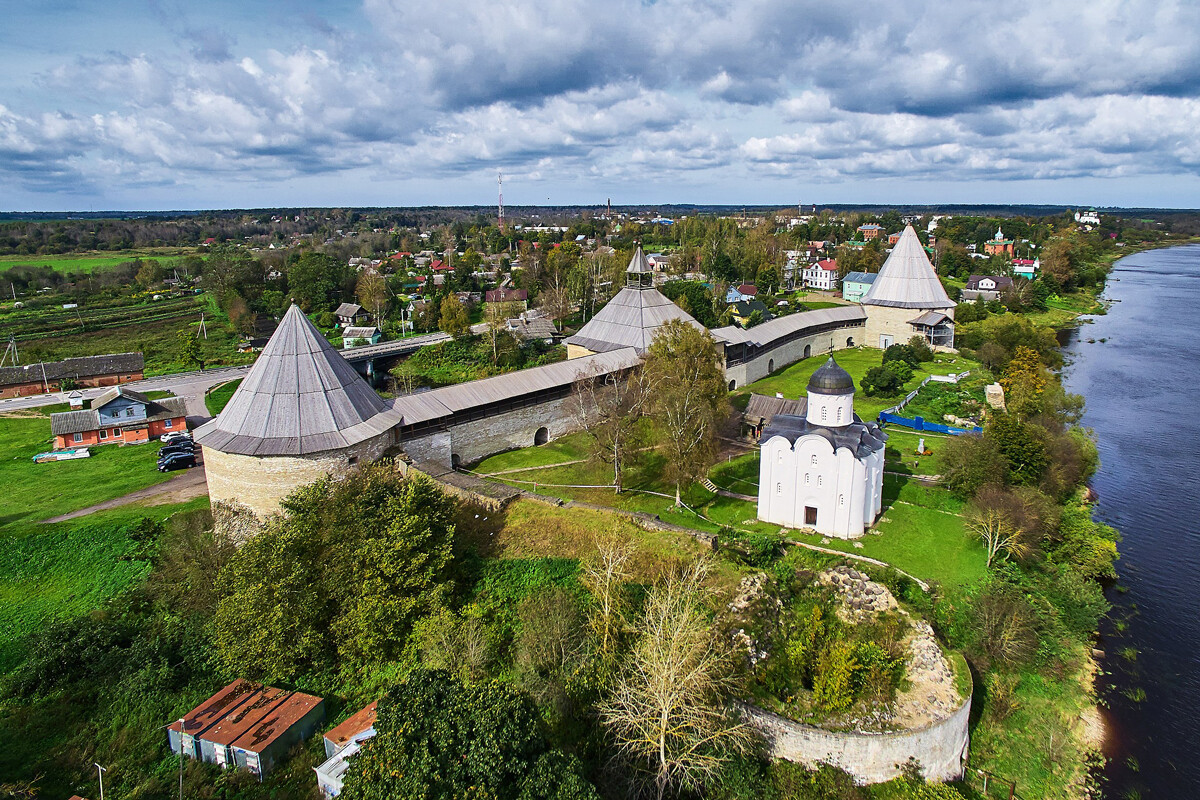
Staraya Ladoga
Karavanov Lev (CC BY-SA 4.0)“In 862, they drove the Varangians beyond the sea, not paying the tribute and they began ruling themselves. There was no verity between them and they had a feud and they warred with each other. So they said: ‘let’s look for a prince who would rule us and judge righteously’,” says the Primary Chronicle, one of the key Russian chronicles, created allegedly at the beginning of the 12th century.
According to this document, Varangian brothers Rurik, Sineus and Truvor heeded the call of the Eastern Slavic tribes and their allies, the neighboring Finno-Ugric tribes Chudes and Meryans, and began ruling in three cities. And, while all sources agree that Sineus went to Beloozero (modern Vologda Region) and Truvor – to Izborsk (modern Pskov Region), versions on Rurik’s residence vary.
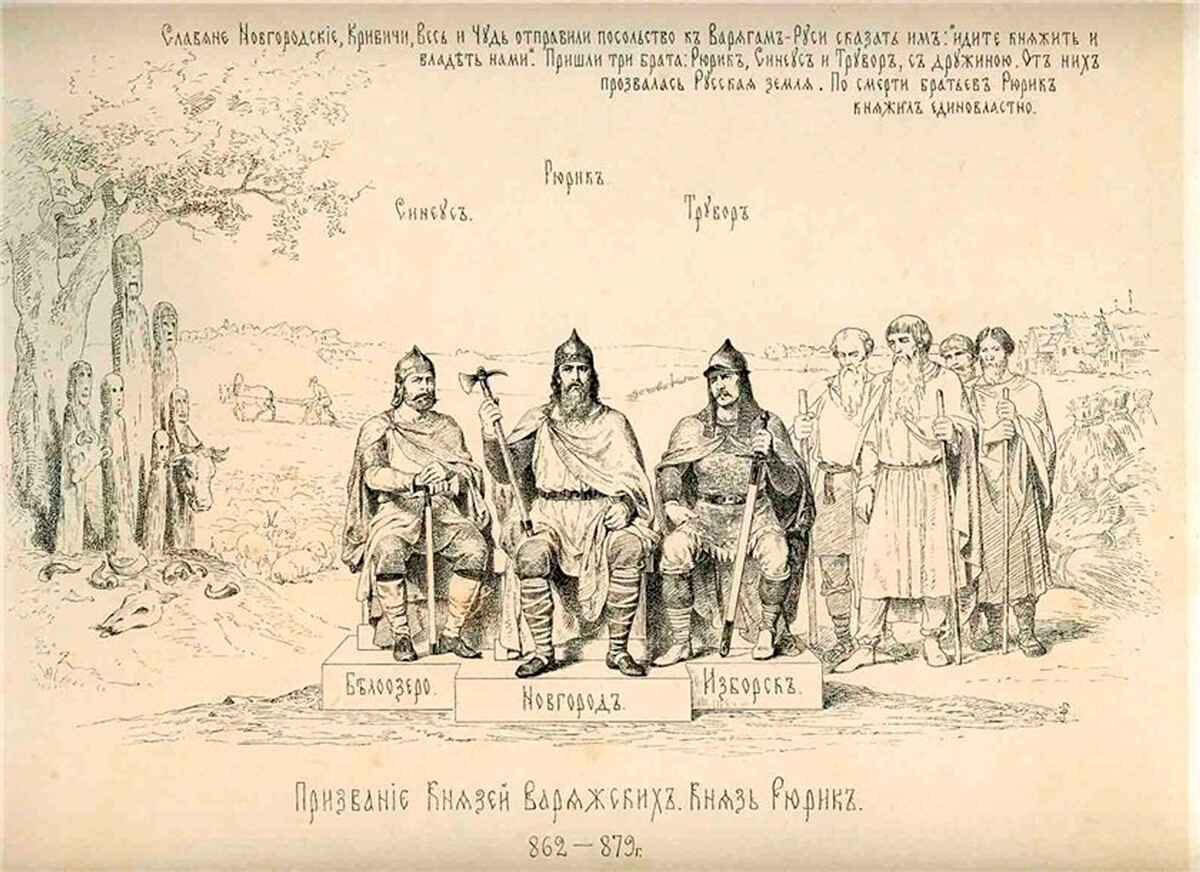
Calling of Varangian princes
Public DomainThe point is, the original version of the Primary Chronicle didn’t survive. Five lists of the 14th-16th centuries survive to our day – later reproductions of the document that were not its strict copies. In other words, several editions of the Chronicle were released in Late Medieval times.
According to one of the lists, in 862, Rurik really did settle in Ladoga and, in 864, after the death of both his brothers, assumed sole authority, moved to Lake Ilmen and founded his settlement. Later, Novgorod appeared near it.
Another point of view states that Rurik settled on Novgorodian lands to begin with. The supporters of this point of view reference the fact that, in the middle of the 9th century, Ladoga was a non-reinforced trade settlement, which means he couldn’t have chosen it to be his residence. Moreover, somewhere around the 860s, right before summoning the Varangians, Ladoga had a large fire, which possibly happened as a result of internal power struggles.
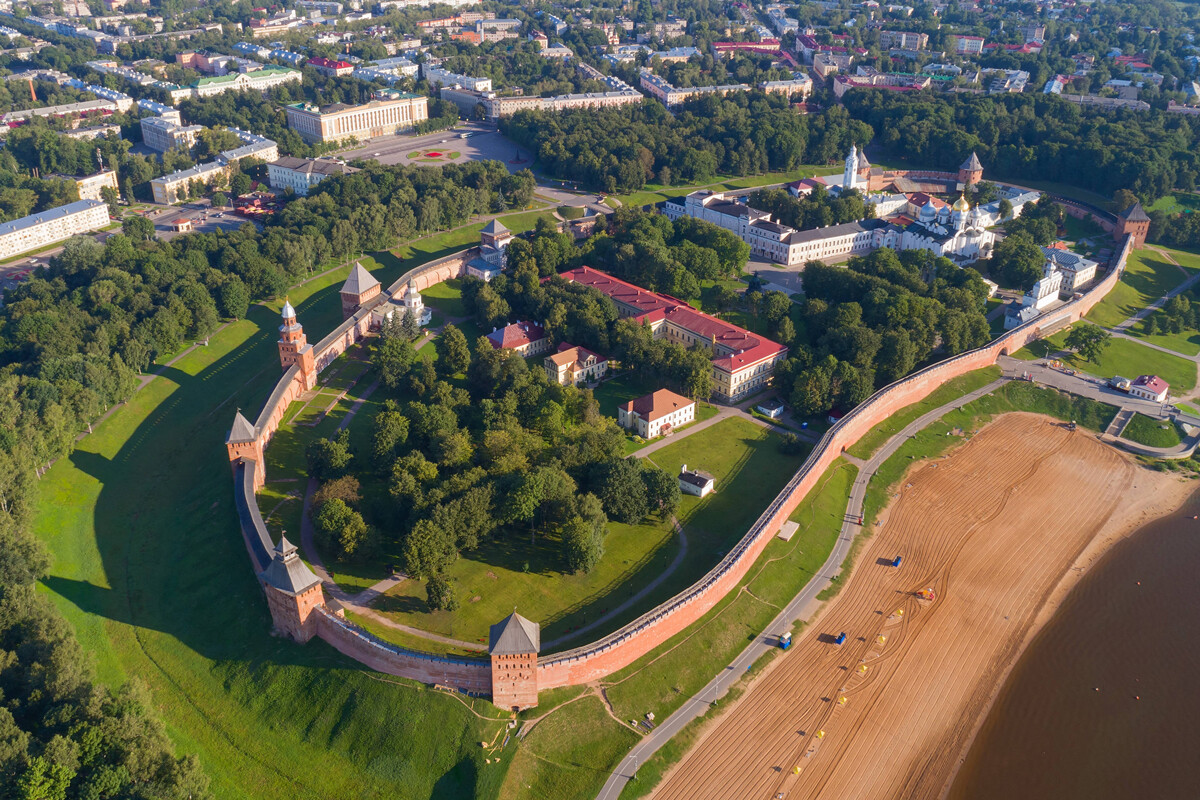
Novgorod Kremlin
Legion MediaThe version about Rurik beginning his rule in Ladoga could have emerged in the 11th-12th centuries because of its political relations with Novgorod: the Ladoga city community strove for separation and the formation of their own ‘volost’.
“The Ladoga denizens proposed a mirrored historical concept, within which now Novgorod, allegedly founded by a Ladoga prince, supposedly was a suburb of Ladoga,” historian Maksim Zhikh writes. “The formation of historical memory, in which Ladoga was understood as the capital, as an independent city in the past and also as an older city in relation to Novgorod, was supposed to help the Ladoga denizens achieve independence for their city in the present.”
The reality of the figure of Rurik himself is also under doubt. Those who believe he really existed refer to medieval chronicle lists that were created, as it’s believed, 150-200 years after Rurik’s rule.
The question of his ancestry was also actively researched. In chronicles, Varangians were Swedes, Norwegians, Gotlanders and English. All of them, apart from the latter, belong to Scandinavians or Normans. The supporters of the Norman theory, which formed in the 18th century, believe Rurik to be one of them. His name, as it’s believed, comes from the Proto-Germanic language, the ancestor of Scandinavian languages.
It’s also noted that the name ‘Rurik’ is similar to the name of Rorik of Dorestad or Rorik of Jutland – a vassal of the Frankish kings of the middle of the 9th century. With that, there are no mentions of the ‘Russian’ Rurik in western chronicles and the proximity of lives of Rurik and Rorik makes some researchers think it was the same man.
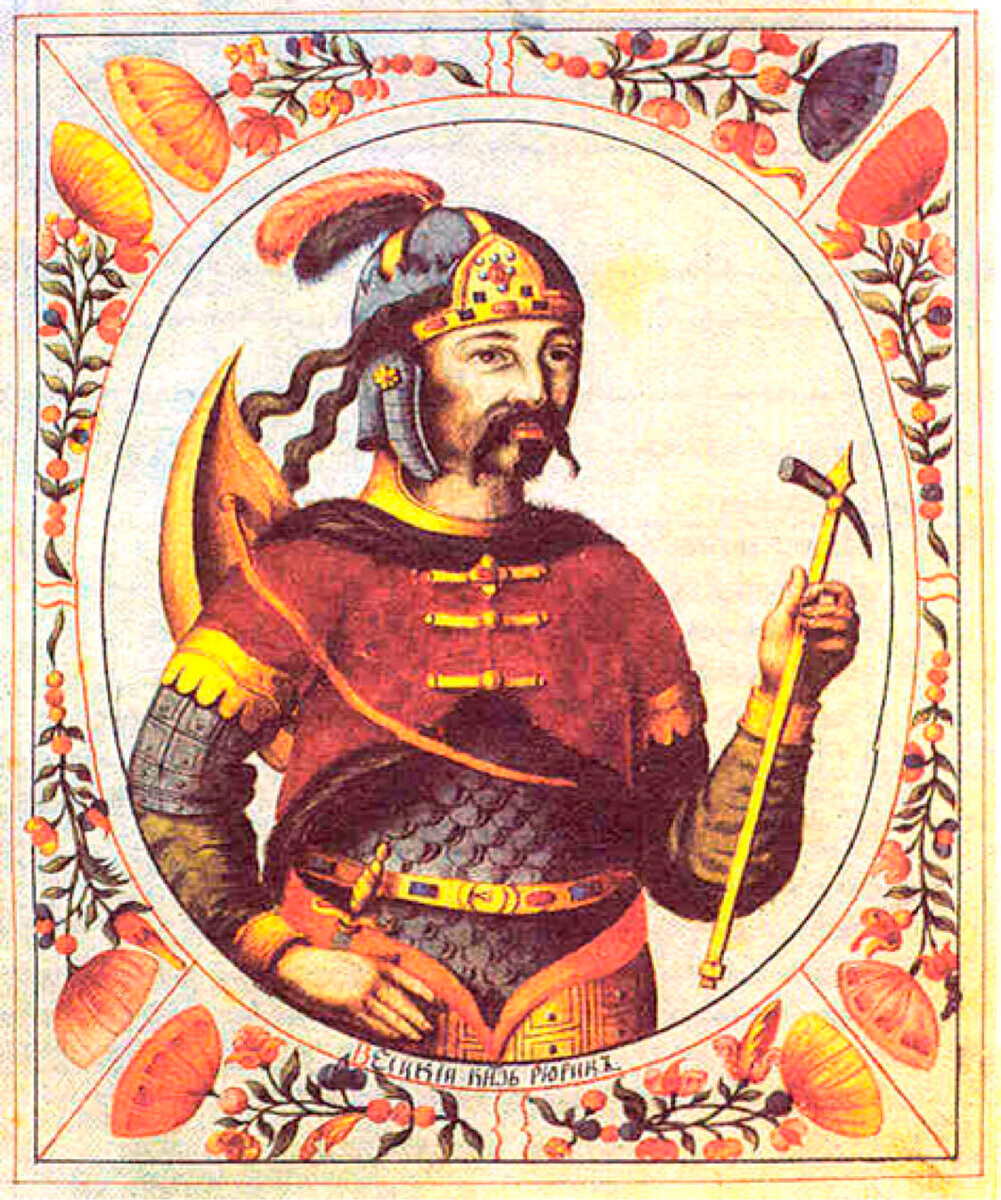
Rurik. Portrait from the ‘Book of Titles of the Grand Princes and the Tsars of the Russian State’
Public domainThere were also versions that Rurik is a representative of the Rus’ Varangians from the Obotrites – the union of Slavic tribes that occupied the southern shores of the Baltic Sea. Such a point of view was asserted by 18th-century polymath Mikhail Lomonosov. He was appalled at the very idea that a Scandinavian had brought the Russian people their statehood.
In the 16th century, some Roman-Prussian roots of Rurik were allegedly discovered: his lineage was traced from Roman Emperor Augustus. As such, Rurik’s descendants, the Grand Princes of Moscow, should have been treated as the descendants of Augustus, as a tsar family.
“By the Late Medieval times, Rurik as a person assumed the key role for the ruling dynasty’s self-perception. Later, in the 17th century, a portrait of Rurik would begin the famous ‘Book of Titles of the Grand Princes and the Tsars of the Russian State’. In this book, portraits of the most outstanding rulers in the history of the Russian state would be presented. Rurik would be first there,” historian Arkady Tarasov notes.
It’s probably pointless to argue about the first capital of Russia, since there was no such state in the era of Rurik. Opinions about this also differ.
The hypothetical date of the emergence of the Ancient Russian state is set as 882 by modern historians – this is when Rurik’s relative, Oleg, united Novgorod and Kiev, conquered by him, under his rule.
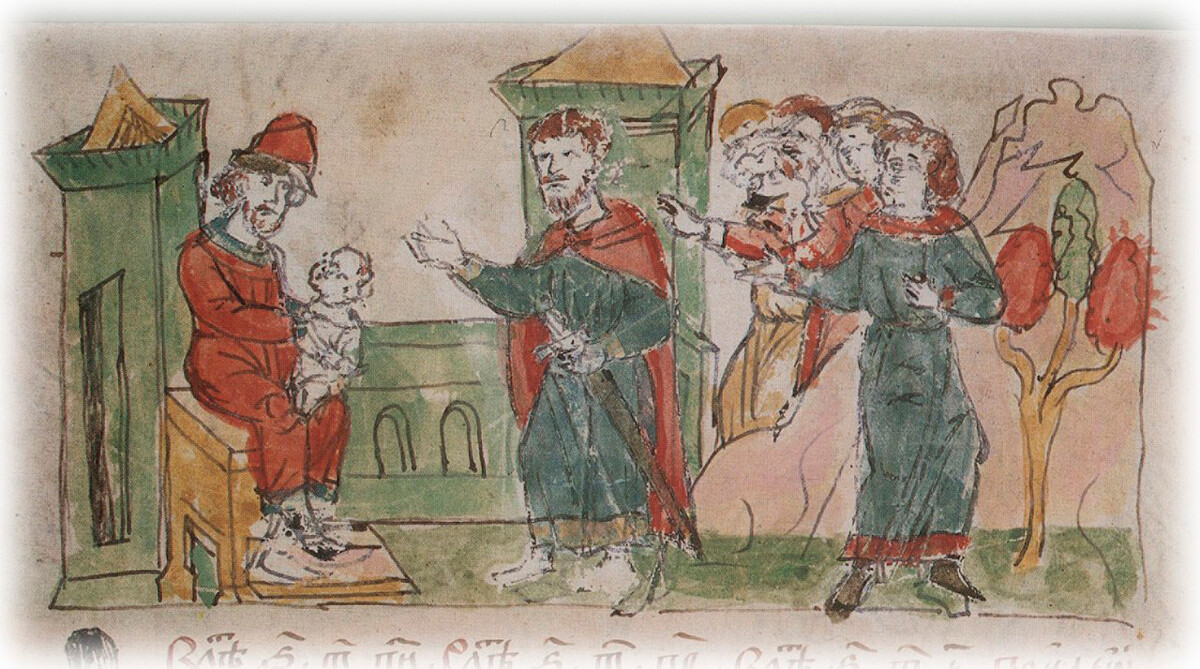
Before his death Rurik transfers reigning to his relative Oleg and appoints him guardian of his young son Igor
Public DomainThe position of Moscow’s school of history consists of the fact that, in a strict sense, Russia was formed only in the 14th-15th century under Ivan III – the Grand Prince of Moscow, who began to unite Russian principalities around Moscow. Ivan III put an end to the vassal dependence of Russian lands on the Golden Horde; he established a body of laws, developed the bureaucratic features of a state, introduced the symbol of the highest authority – the coat of arms with the depiction of a two-headed eagle – and assumed the title of the Tsar of all Russia.

Ivan III
Public domainHowever, in 1862, under Emperor Alexander II, the monument ‘Millennium of Russia’ was officially opened in Veliky Novgorod in honor of the anniversary of summoning the Varangians. Rurik – the founder of the state – takes a special place in its composition.
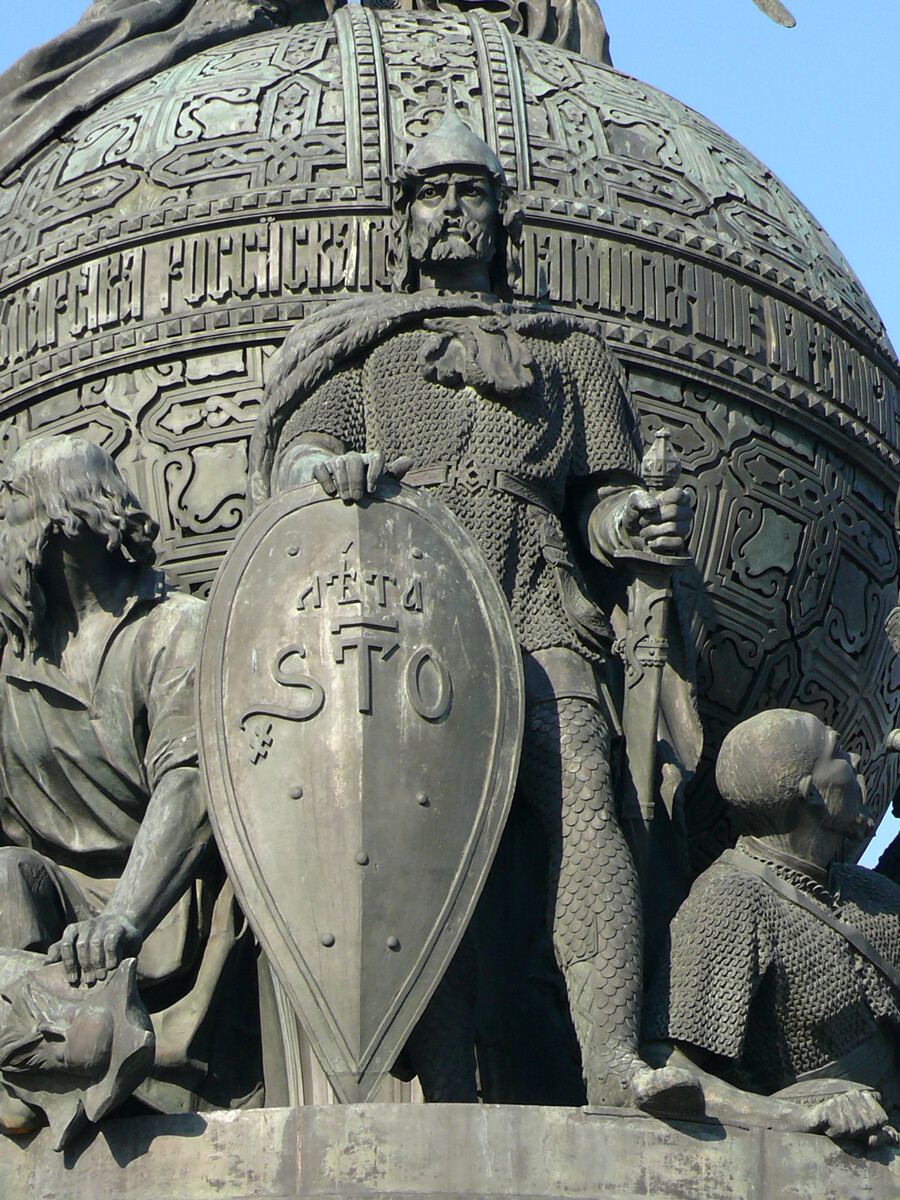
Rurik on the monument "Millennium of Russia"
Dar Veter (CC BY-SA 3.0)Nicholas I, the father of Alexander II, officially recognized 862 as the year of the beginning of the statehood of Russia. His son celebrated the round number date and initiated a large theatrical opening of the monument, pursuing several of his political goals.
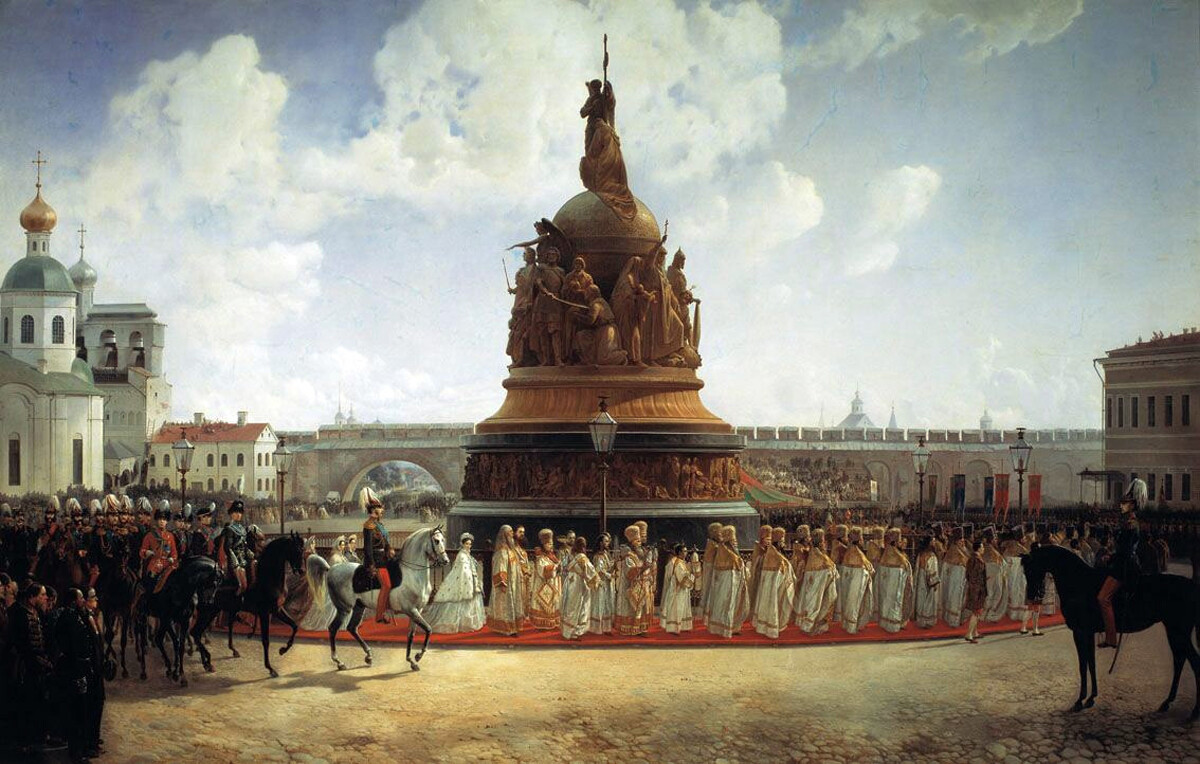
Opening of the monument "Millennium of Russia" in Novgorod in 1862. 1864, Bogdan Willewalde
Novgorod State United Museum-ReserveFirst of all, to reassert the continuity of power: the bas-reliefs of the monument depict the key rulers. Second, to place emphasis on the fact that the Russian rule began with an “amicable deal” between the authorities and the people (meaning Rurik and the tribes that summoned him) – and was still resting upon it. Finally, opening the monument specifically in Novgorod reminded of the “first freedoms” that the inhabitants of the medieval Novgorod Republic now enjoyed. It was important for the authorities in 1862 to draw such a parallel in the context of the liberal “great reforms” of Alexander II.

It’s clear that, over the course of centuries, emphases were placed in chronicles and Russian history interpretations based on the need to assert relevant political standpoints. And, although there are no definite answers to the questions of the emergence of the Russian statehood, the recognized status of the “progenitor” of Russia solidified for Rurik; the summoning of the Varangians became an important milestone in the formation of the Russian state.
Dear readers,
Our website and social media accounts are under threat of being restricted or banned, due to the current circumstances. So, to keep up with our latest content, simply do the following:
If using any of Russia Beyond's content, partly or in full, always provide an active hyperlink to the original material.
Subscribe
to our newsletter!
Get the week's best stories straight to your inbox